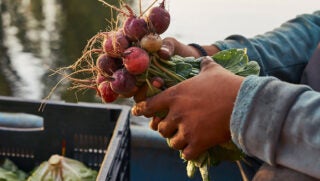Today, the U.S. Environmental Protection Agency told farmers the good news that they can continue using dicamba products in their weed management program for the next five years.
The decision comes after a summer announcement when Bayer Ag (formerly Monsanto) and other crop protection manufacturers were blocked by the 9th Circuit U.S. Court of Appeals from selling dicamba-based weed killers in the United States. Dicamba had a bit of a rocky start back in 2017 and 2018, when thousands of complaints emerged alleging that the herbicide had drifted into fields that did not have dicamba-tolerant crops in them. The Arkansas State Plant Board, for example, went so far as to ban dicamba across the state for a period of time. (Dicamba applicator trainings were added around the country to help remedy the issue.)
After the 9th Circuit in California vacated the decision in June, it left many farmers with many questions not only for the 2020 growing year, but for future growing seasons as well. When used correctly and without instances of drift, dicamba has become a valuable tool for helping to decrease weed pressures and ultimately improve yields.
“With today’s decision, farmers now have the certainty they need to make plans for their 2021 growing season,” said EPA Administrator Andrew Wheeler. “After reviewing substantial amounts of new information, conducting scientific assessments based on the best available science, and carefully considering input from stakeholders we have reached a resolution that is good for our farmers and our environment.”
Through today’s action, EPA approved new registrations for two “over-the-top” (OTT) dicamba products — XtendiMax with VaporGrip Technology and Engenia Herbicide — and extended the registration for an additional OTT dicamba product, Tavium Plus VaporGrip Technology. These registrations are only for use on dicamba-tolerant (DT) cotton and soybeans and will expire in 2025, providing certainty to American agriculture for the upcoming growing season and beyond.
New restrictions
Although dicamba will be available for next year’s growing season, farmers will see some changes. Wheeler says that there will be a national cut off date for soybeans and cotton instead of a state by state decision. To manage off-site movement of dicamba, EPA’s 2020 registration features important control measures, including:
- Requiring an approved pH-buffering agent (also called a Volatility Reduction Agent or VRA) be tank mixed with OTT dicamba products prior to all applications to control volatility.
- Requiring a downwind buffer of 240 feet and 310 feet in areas where listed species are located.
- Prohibiting OTT application of dicamba on soybeans after June 30 and cotton after July 30.
- Simplifying the label and use directions so that growers can more easily determine when and how to properly apply dicamba.
The 2020 registration labels also provide new flexibilities for growers and states. For example, there are opportunities for growers to reduce the downwind spray buffer for soybeans through use of certain approved hooded sprayers as an alternative control method. EPA also recognizes and supports the important authority FIFRA section 24 gives the states for issuing locally appropriate regulations for pesticide use. If a state wishes to expand the federal OTT uses of dicamba to better meet special local needs, the agency will work with them to support their goals.


